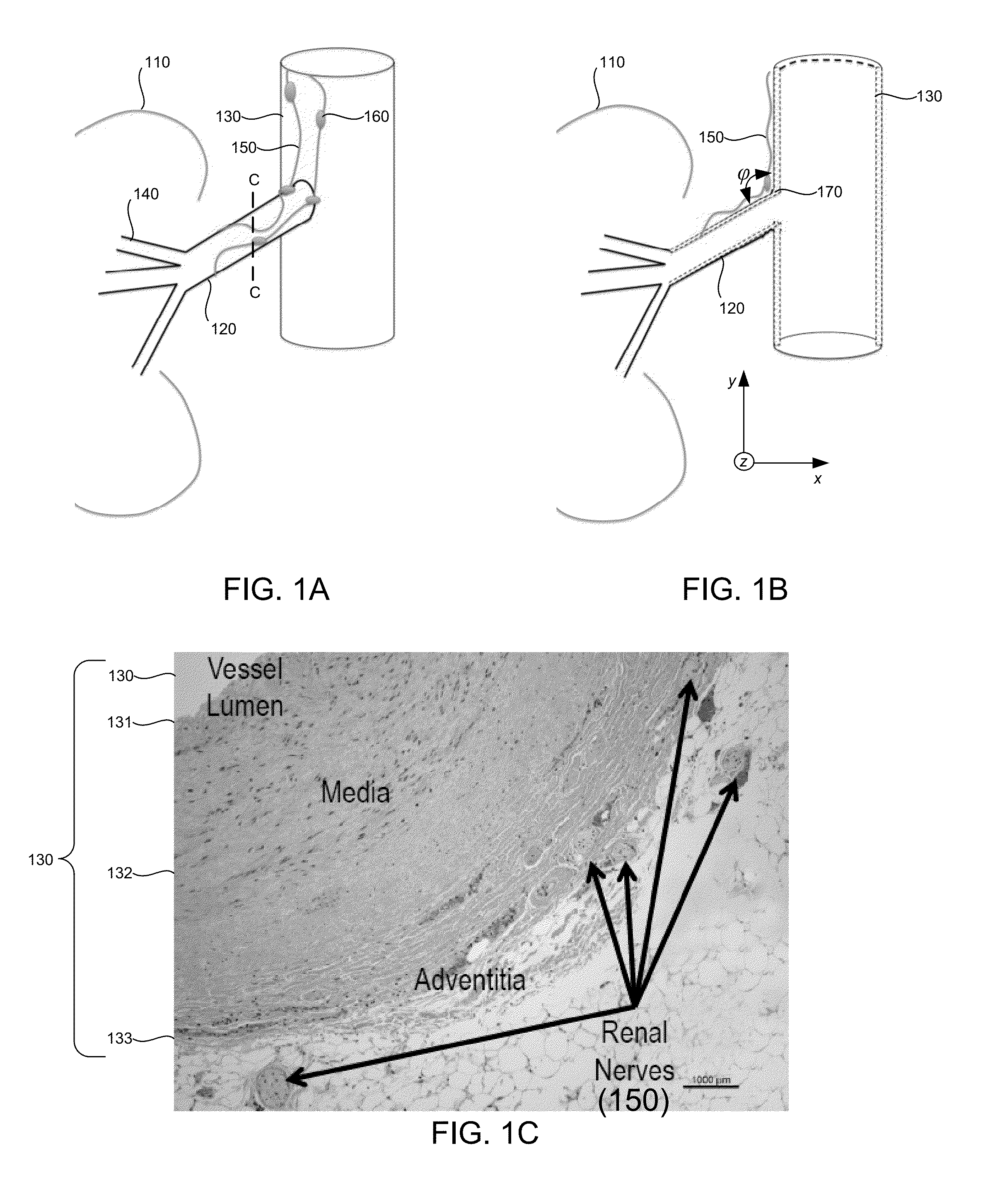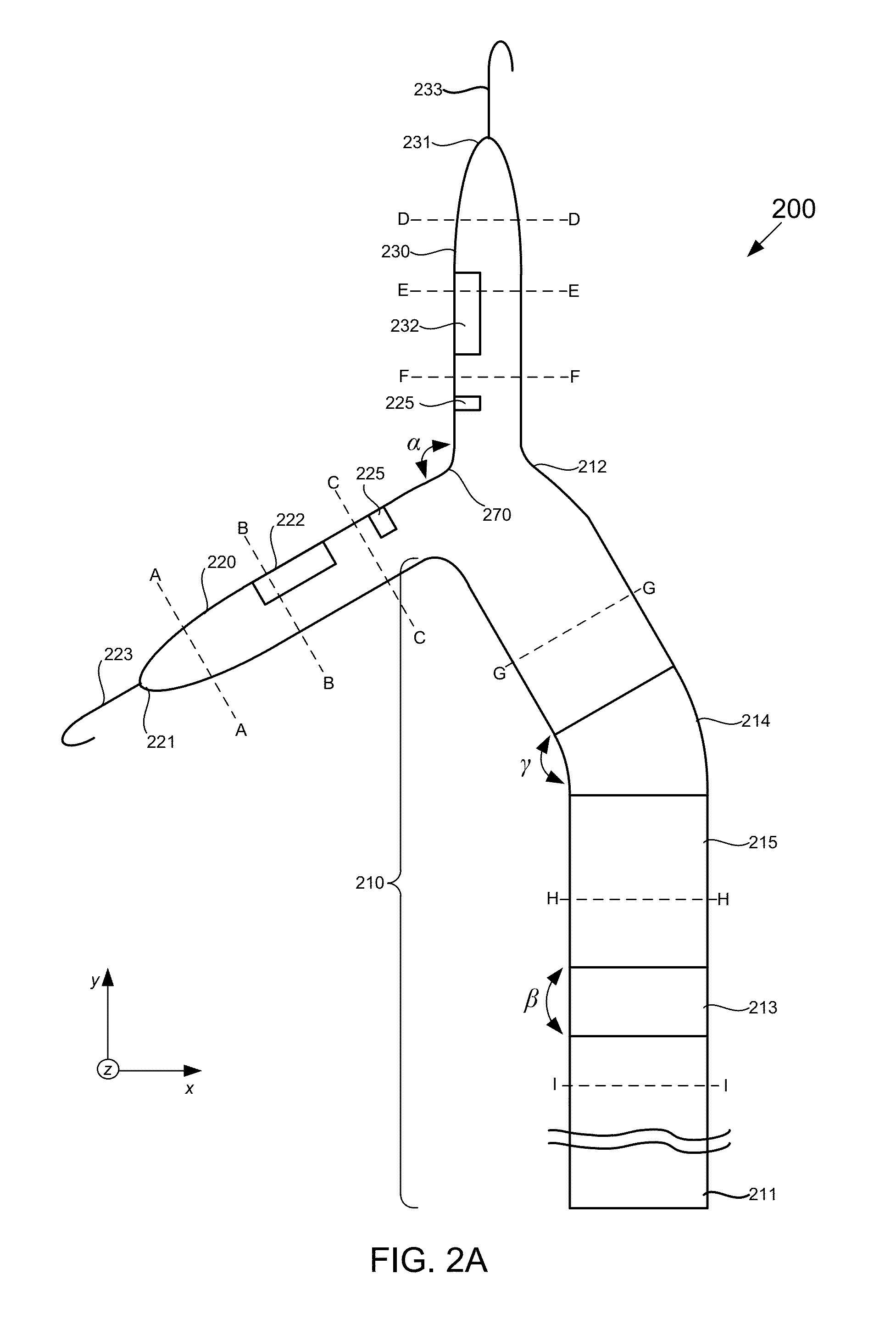Systems for transcatheter ablation of adventitial or perivascular tissue while preserving medial and intimal vascular integrity through convergence of energy from one or more sources, and methods of making and using same
a technology of transcatheter ablation and perivascular tissue, which is applied in the field of systems for performing controlled depth focal tissue ablation, can solve the problems of unpleasant side effects, patient suboptimal control of blood pressure, and adverse effects on the therapeutic effect, so as to facilitate engagement, facilitate selection of particular points, and reduce the risk of relative motion
- Summary
- Abstract
- Description
- Claims
- Application Information
AI Technical Summary
Benefits of technology
Problems solved by technology
Method used
Image
Examples
Embodiment Construction
[0036]Embodiments of the present invention provide systems for performing renal denervation at depths beyond the media of the renal arterial wall using multiple ablation pads, and methods of making and using the same. The systems include flexible catheters configured to engage the branchpoint between the renal artery and the aorta in such a manner that both inhibits relative motion of the kidney and the catheter as the patient breathes, and facilitates ablation at points that lie outside of the media of the renal arterial wall. Specifically, the flexible catheters include first and second arms that are respectively configured to be disposed in the renal artery and the aorta, with a bifurcation therebetween that engages the branchpoint between the renal artery and the aorta so as essentially to lock the catheter into position with respect to the renal artery and the aorta. A first ablation pad, disposed on the first arm of the catheter, and a second ablation pad, disposed on the seco...
PUM
 Login to View More
Login to View More Abstract
Description
Claims
Application Information
 Login to View More
Login to View More - R&D
- Intellectual Property
- Life Sciences
- Materials
- Tech Scout
- Unparalleled Data Quality
- Higher Quality Content
- 60% Fewer Hallucinations
Browse by: Latest US Patents, China's latest patents, Technical Efficacy Thesaurus, Application Domain, Technology Topic, Popular Technical Reports.
© 2025 PatSnap. All rights reserved.Legal|Privacy policy|Modern Slavery Act Transparency Statement|Sitemap|About US| Contact US: help@patsnap.com



